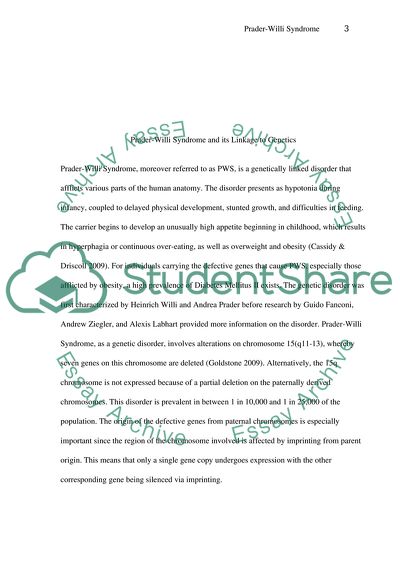Cite this document
(Prader-Willi Syndrome and its Linkage to Genetics Essay Example | Topics and Well Written Essays - 2500 words - 1, n.d.)
Prader-Willi Syndrome and its Linkage to Genetics Essay Example | Topics and Well Written Essays - 2500 words - 1. https://studentshare.org/biology/1789946-prader-willi-syndrome-and-its-linkage-to-genetics
Prader-Willi Syndrome and its Linkage to Genetics Essay Example | Topics and Well Written Essays - 2500 words - 1. https://studentshare.org/biology/1789946-prader-willi-syndrome-and-its-linkage-to-genetics
(Prader-Willi Syndrome and Its Linkage to Genetics Essay Example | Topics and Well Written Essays - 2500 Words - 1)
Prader-Willi Syndrome and Its Linkage to Genetics Essay Example | Topics and Well Written Essays - 2500 Words - 1. https://studentshare.org/biology/1789946-prader-willi-syndrome-and-its-linkage-to-genetics.
Prader-Willi Syndrome and Its Linkage to Genetics Essay Example | Topics and Well Written Essays - 2500 Words - 1. https://studentshare.org/biology/1789946-prader-willi-syndrome-and-its-linkage-to-genetics.
“Prader-Willi Syndrome and Its Linkage to Genetics Essay Example | Topics and Well Written Essays - 2500 Words - 1”. https://studentshare.org/biology/1789946-prader-willi-syndrome-and-its-linkage-to-genetics.


